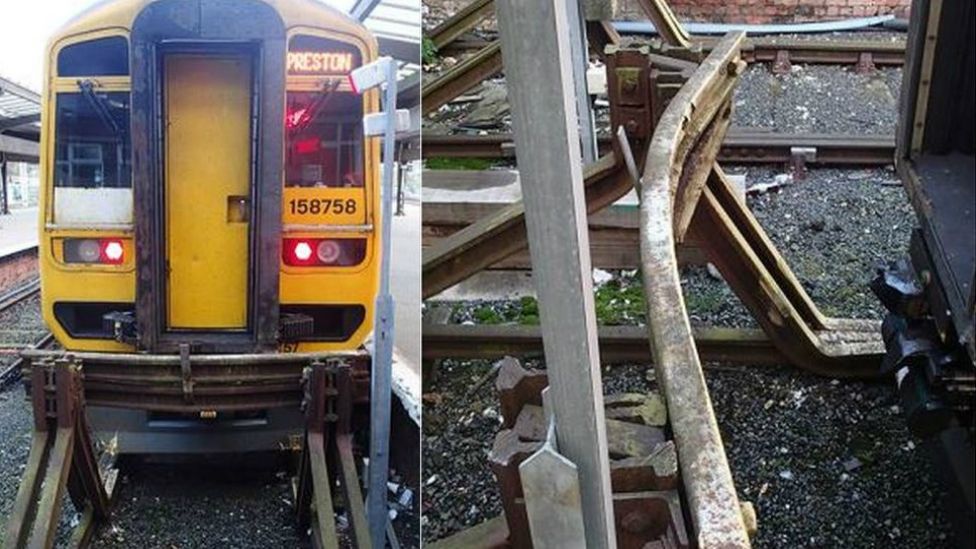Home Minister Datuk Seri Saifuddin Nasution Ismail who announced this today said the 20 automatic gates placed at the entry and exits of these … Read More Call Now 800.576.5919 Newark Jersey City Paterson Elizabeth Lakewood Township Edison Woodbridge Township Toms River Hamilton Township, Mercer County Trenton Clifton Cherry Hill Brick Township Camden Bayonne Passaic East […]
Home Minister Datuk Seri Saifuddin Nasution Ismail who announced this today said the 20 automatic gates placed at the entry and exits of these borders … Read More Call Now 800.576.5919 Newark Jersey City Paterson Elizabeth Lakewood Township Edison Woodbridge Township Toms River Hamilton Township, Mercer County Trenton Clifton Cherry Hill Brick Township Camden Bayonne Passaic […]
Police are investigating whether semi-autonomous technology was being used when a Tesla electric car rammed ferry gates in Canada. Read More Call Now 800.576.5919 Newark Jersey City Paterson Elizabeth Lakewood Township Edison Woodbridge Township Toms River Hamilton Township, Mercer County Trenton Clifton Cherry Hill Brick Township Camden Bayonne Passaic East Orange Union City Franklin Township, […]
IoT- and AI-based technology being combined with automated gates is a key trend in this space. East Asia is a lucrative market for automatic gate … Read More Call Now 800.576.5919 Newark Jersey City Paterson Elizabeth Lakewood Township Edison Woodbridge Township Toms River Hamilton Township, Mercer County Trenton Clifton Cherry Hill Brick Township Camden Bayonne Passaic […]
… be seen breaking into mild laughter while informing the man about Vijayawada being the next station where the automatic gates will open again. Read More Call Now 800.576.5919 Newark Jersey City Paterson Elizabeth Lakewood Township Edison Woodbridge Township Toms River Hamilton Township, Mercer County Trenton Clifton Cherry Hill Brick Township Camden Bayonne Passaic East […]
Complimenting this colossal engine is an 8-speed automatic transmission with an all-wheel-drive system. Despite weighing over 2.2 tons, the 0-100 km/h … Read More Call Now 800.576.5919 Newark Jersey City Paterson Elizabeth Lakewood Township Edison Woodbridge Township Toms River Hamilton Township, Mercer County Trenton Clifton Cherry Hill Brick Township Camden Bayonne Passaic East Orange Union City […]
The Ministry of the Interior said that to facilitate international travel, e-Gate, an automatic border control system, has been upgraded to a … Read More Call Now 800.576.5919 Newark Jersey City Paterson Elizabeth Lakewood Township Edison Woodbridge Township Toms River Hamilton Township, Mercer County Trenton Clifton Cherry Hill Brick Township Camden Bayonne Passaic East Orange Union […]
… qualified travelers use the self-enrollment Automated Immigration Clearance System (e-Gate) to make the customs process easier and faster. Read More Call Now 800.576.5919 Newark Jersey City Paterson Elizabeth Lakewood Township Edison Woodbridge Township Toms River Hamilton Township, Mercer County Trenton Clifton Cherry Hill Brick Township Camden Bayonne Passaic East Orange Union City Franklin Township, […]
Before automatic gates were installed, crossing keepers would physically change the signals and open the gates for road users. Read More Call Now 800.576.5919 Newark Jersey City Paterson Elizabeth Lakewood Township Edison Woodbridge Township Toms River Hamilton Township, Mercer County Trenton Clifton Cherry Hill Brick Township Camden Bayonne Passaic East Orange Union City Franklin Township, […]
Previous ArticleThe Benefits Of Automatic Gates · Nerd Voices. Here at Nerdbot we are always looking for fresh takes on anything people love with … Read More Call Now 800.576.5919 Newark Jersey City Paterson Elizabeth Lakewood Township Edison Woodbridge Township Toms River Hamilton Township, Mercer County Trenton Clifton Cherry Hill Brick Township Camden Bayonne Passaic East […]










